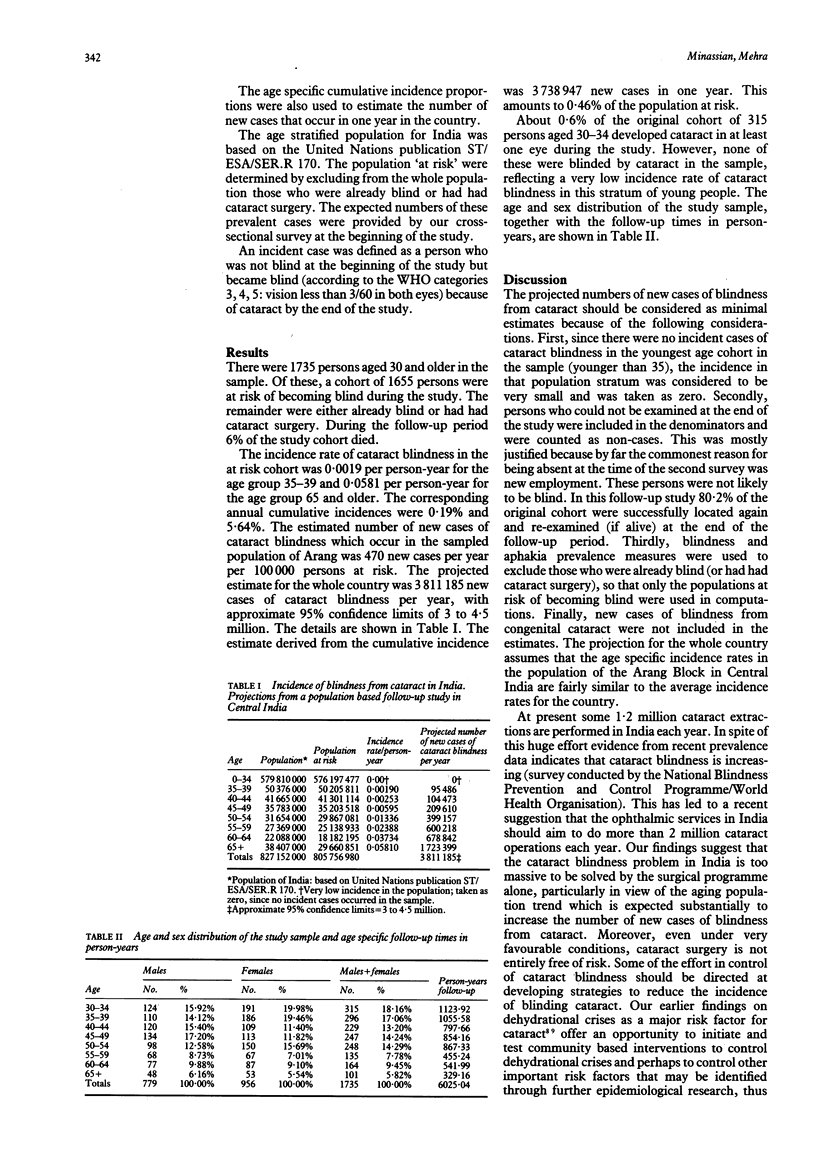Abstract
Data from a population based longitudinal study of randomly selected communities in Central India have for the first time provided direct estimates of age specific incidence of blindness from cataract. Person-time denominators have been used to compute age specific incidence rates (risk) of blindness from cataract for populations aged 35 and older. These age specific incidence measures have been applied to the 'population at risk' in each 5-year age class in order to estimate the total number of new cases of cataract blindness that occur in the country each year. The findings indicate that an estimated 3.8 million persons become blind from cataract each year in India (approximate 95% confidence limits: 3 to 4.5 million). The reasons why the estimates are considered as minima, and their implications concerning future national planning of ophthalmic services, are briefly discussed.
Full text
PDF


Selected References
These references are in PubMed. This may not be the complete list of references from this article.
- Faal H., Minassian D., Sowa S., Foster A. National survey of blindness and low vision in The Gambia: results. Br J Ophthalmol. 1989 Feb;73(2):82–87. doi: 10.1136/bjo.73.2.82. [DOI] [PMC free article] [PubMed] [Google Scholar]
- Mehra V., Minassian D. C. A rapid method of grading cataract in epidemiological studies and eye surveys. Br J Ophthalmol. 1988 Nov;72(11):801–803. doi: 10.1136/bjo.72.11.801. [DOI] [PMC free article] [PubMed] [Google Scholar]
- Miettinen O. Estimability and estimation in case-referent studies. Am J Epidemiol. 1976 Feb;103(2):226–235. doi: 10.1093/oxfordjournals.aje.a112220. [DOI] [PubMed] [Google Scholar]
- Minassian D. C., Mehra V., Jones B. R. Dehydrational crises from severe diarrhoea or heatstroke and risk of cataract. Lancet. 1984 Apr 7;1(8380):751–753. doi: 10.1016/s0140-6736(84)91274-1. [DOI] [PubMed] [Google Scholar]
- Minassian D. C., Mehra V., Verrey J. D. Dehydrational crises: a major risk factor in blinding cataract. Br J Ophthalmol. 1989 Feb;73(2):100–105. doi: 10.1136/bjo.73.2.100. [DOI] [PMC free article] [PubMed] [Google Scholar]


